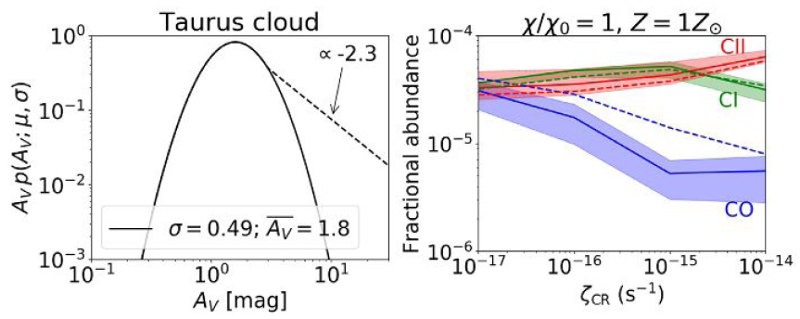| EPoS Contribution |
|
A new tool to estimate the atomic and molecular ISM content using probability distributions
Thomas Bisbas U Koeln, Cologne, DE | |
| Modern observations of the ISM in galaxies detect a variety of atomic and molecular species. The goal is to connect these observations to the astrochemical properties of the ISM. 3D hydro-chemical simulations attempt this but due to extreme computational cost, they have to rely on simplified chemical networks and are bound to individual case studies. We present an alternative approach which models the ISM at larger scales by an ensemble of pre-calculated 1D thermo-chemical PDR calculations that determine the abundance and excitation of atomic and molecular species. We apply our method to different shapes of log-normal column-density probability density functions (PDF) and study how the ISM content changes as a function of the FUV intensity, the cosmic-ray ionization rate, and the metallicity. As an application, we examine the observed PDFs of the Taurus cloud. Our numerical framework models the properties of the mostly used molecular species and account for densities from ~1 to 106 cm-3. It is computationally very efficient and can be used to estimate the PDR properties of large ISM regions and quantify trends with different environmental parameters as it is fast, covers wide parameter space, and is flexible for extensions. It is our intention to build a next-generation interactive and online publicly-available tool for the community to use our new statistical approach at large. | |
 | |
| Caption: The column-density PDF of Taurus cloud and the estimated carbon cycle abundances for different cosmic-ray ionization rates. The power-law tail increases the abundance of CO quite significantly. | |
| Collaborators: A. Schruba, MPE, DE E. van Dishoeck, U Leiden/MPE, NL/DE |
Key publication
Suggested Session: Chemistry |

